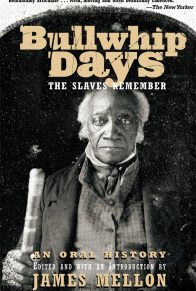Smith, on the other hand, faced a two-hour trip on a hard bench seat in a drafty carriage with a view of bare trees and muddy farm fields. He was on his way to interview an American artist, Ralph Albert Blakelock, who for the past fifteen years had been incarcerated, and largely forgotten, in an asylum in Middletown.
Smith later claimed that he personally rediscovered Blakelock. In fact, he was heading to Middletown at the suggestion of Beatrice Van Rensselaer Adams, a young woman he had found waiting outside the city editor’s office early that very morning. Adams was a well-coifed vamp-attractive, with dark hair and “glittering” black eyes-who passed herself off as a philanthropist. She had already tipped off the Tribune‘s competitors to the Blakelock story. In fact, by the time Smith got on the train that day both the New York Times and New York’s largest paper, Joseph Pulitzer’s World, had already run a series of prominent articles on Blakelock. Far from being the first on the scene, Smith was actually playing catch-up. Two weeks before, a lifetime in the fiercely competitive world of New York’s battling dailies, the World, at Beatrice Adams’s bidding, had sent an editor up to the asylum to do a front-page story on the artist who was being bandied about in the papers as “America’s greatest painter.”
Blakelock, once a prominent New York artist, had been committed first to the Long Island State Hospital in Flatbush in 1899. He was transferred to the more isolated hinterlands of Middletown in 1901. Blakelock, the man, was soon forgotten. Yet almost as soon as the doors closed behind him Blakelock’s reputation redoubled, as did the market for his work. Considered on a par with such American masters as Whistler, Sargent, Inness, Homer, and Ryder, the paintings Blakelock had sold in hard times for $25 or $30 were being sold by dealers and collectors for hundreds, sometimes thousands of dollars (paying more than a thousand dollars for a painting was considered wildly extravagant at the time). There was such a demand for Blakelocks that the New York Evening Post noted in 1903 that “every exhibition or sale has one or more of his [Blakelock’s] work, and no collection, however small, is thought to be complete without a canvas or two by him.” In particular demand were Blakelock’s luminous moonlights, which, well known among the cognoscenti, had achieved a legendary status among collectors and artists. By 1913, a Blakelock moonlight, now in the Corcoran Gallery in Washington, D.C., sold for a record auction price of $13,900. The sale caused quite a stir. That same year, Blakelock was finally elected an associate academician at the National Academy of Design. Soon after, Elliott Daingerfield, a fellow artist, published a biography of Blakelock, and an important exhibition of Blakelock, Inness, and Wyant was held in Chicago, further solidifying their reputation as America’s top three landscape painters. Despite his fame in the art world, Blakelock remained sequestered in Middletown, unheralded and penniless. He passed his time painting small impressionistic landscapes on cigar box lids that no one, except for certain members of the staff, took any notice of.
It wasn’t until 1916, fifteen years after his incarceration in Middletown, that Blakelock’s anonymity was shattered. The extraordinary sale on February 22, 1916, of Brook by Moonlight-a brooding canvas in the Romantic style, completed about 1890-set a second record price. The moonlight was auctioned along with the rest of the famous art collection of the bankrupt silk mill tycoon Catholina Lambert. The stubby, self-made Yorkshireman had built a three-story art gallery in his castle-dubbed Balmoral by William Carlos Williams-on the cliffs overlooking Paterson, New Jersey, to show off his collection. Estimated to be worth more than $1 million, it included artists from Botticelli to Monet. But it was Blakelock’s four-by-six-foot moonlight that was the most talked about during the presale exhibition. One newspaper review of the exhibit observed:
Although higher prices may be obtained for the Titian, the Andrea del Sarto, the Rembrandt, the Botticelli and other of the old masters, undoubtedly the most interesting picture in the collection is the marvellous Moonlight by the American, R. A. Blakelock.
As it turned out, the top price on February 22 went to Blakelock. It has been suggested that the record-high prices paid for Blakelock paintings at this time were brought on by the public “hysteria” about the artist. The truth is that at the time of the sale, Blakelock, in Middletown, was still being ignored by the press, and the sensationalist stories about him didn’t begin to circulate until after his record-setting sales. Indeed, one of the strangely overlooked facts about Blakelock’s career is that the popularity of his moonlights began not in 1916 but decades before, when he had received enthusiastic praise for his first exhibited monumental moonlight, A Waterfall, Moonlight, in 1886.
Blakelock’s moonlights often left critics breathless and somewhat inarticulate. The paintings, they said, had a mystical or spiritual presence, a color-saturated luminosity that was difficult to describe with words. They were repeatedly called “poetic” or “lyrical.” Certainly, there was a dramatic, romantic sentiment attached to some of Blakelock’s more popular moonlight compositions that today appears dated, but even these paintings have a tenebrous, chiaroscuro veil that evokes something other, something beyond. In Brook by Moonlight, the viewer is sequestered in a secret dark place on the bank of a forest stream. Overhead a large tree leans precipitously from the opposite steep bank, its massive canopy of lacy foliage splintering the lambent glow of the moon. It’s a dreamy landscape, naturalistically depicted but entirely imaginary in setting. Blakelock was not so much duplicating a place as he was an experience, a state of consciousness. It was as if the viewer himself were lying on the bank of a stream under the summer moonlight, with the trees rustling above and the vast lonely universe all around.
The dark, melancholy aspect of Blakelock’s painting evidently appealed to the tycoon Lambert, who had a tragic personal history of his own. Not that that made him any more generous when he acquired the painting in 1891. He bought the painting either early that year when Blakelock, in a fragile state of mind, was playing the piano on the vaudeville circuit in Paterson or-there are several different stories-later that summer when Biakelock was resting on Lambert’s estate in Pennsylvania after his first breakdown. Blakelock had, in any event, asked for at least one thousand dollars for the canvas and only reluctantly accepted Lambert’s final offer of six hundred dollars.
In the auction in the Plaza Hotel ballroom on February 22, the first bid after the olive-green curtains were swept aside to reveal the moonlight was $14,000. In four minutes, amid considerable applause, it was sold to the Toledo Museum for $20,000-a record in 1916 for the sale at auction of work by a living American painter. The suave auctioneer, Thomas E. Kirby, obviously pleased, called Brook by Moonlight the “finest work ever done by an American artist.”
Such high-flown praise was, some thought, exaggerated. Even so, most critics agreed that there was no other nineteenth-century American painter quite as original as Blakelock. He had done more than any other artist, with the possible exception of Albert Pinkham Ryder-whom he frequently was compared to-to wrest American landscape painting from its pastoral foundations. In Blakelock’s hands, an art that was once considered the reflection of an “objective” place became an expression of subconscious feelings. “Blakelock was by nature a dreamer,” wrote the critic Raymond Wyer in 1916. “To call him a landscape painter is incorrect. No artist has used the landscape as means to an end more than he.”
Indeed, Blakelock’s radical paintings of the 1880s and 1890s took self-expression into an imaginary realm that had as much in common with the abstract expressionist ideas of Jackson Pollock, Franz Kline, and Mark Rothko in the mid-twentieth century as it did with the painters of his own time. “It goes, in certain directions, beyond anything produced by any other American,” The Nation commented in 1916 on the precocious nature of Blakelock’s work. Contrasting his paintings to the “more objective” work of Homer, Wyant, and Inness, The Nation opined that Blakelock “has occupied a field which has scarcely been touched by any of these … Blakelock goes furthest in his freedom from conscious premeditation and his complete triumph over the limitations of his medium.”
There was considerable pride in the many articles that followed up the Brook by Moonlight sale that an American work brought such a high price (a Pierre-Auguste Renoir sold for only $16,000). It was noted, too, that the total for the eleven Blakelocks in the sale, more than $46,000, was well above those achieved by the Botticellis, the Rembrandts, the Renoirs, the Monets, the Pissarros, and the rest. In a country whose art market had been dominated for more than a century by European paintings, this was considered quite a coup.
No sooner had Brook by Moonlight arrived at the Toledo Museum than it was packed up and shipped back to New York to be shown at an exhibit of Blakelock’s paintings being held at the Reinhardt Galleries on Fifth Avenue. The exhibit opened to great fanfare on April 3, 1916. It had been organized as part of a concerted effort to gain the release of Blakelock from the asylum and provide a fund to support the impoverished artist and his family. Photographs of Blakelock, his paintings, and Mrs. Adams, the pretty, photogenic philanthropist who had “rescued” the painter from anonymity, had been featured in many of the city’s papers. The Blakelock story seemed to have been more than adequately covered. Still, Harrison Smith, who claimed to have “a scent for a front-page story,” was convinced that the artist’s impending visit to the city would grab even grander headlines. About this Smith was right. The public’s curiosity for Blakelock was to prove insatiable. The discovery of a destitute mad genius whose mysterious paintings had millionaires bidding fortunes was the kind of Horatio Alger myth Americans loved. Blakelock was fast becoming an American success story, a tragedy averted, a calamitous life with a happy ending. At least it seemed so.
As the train slowly puffed its way through the Ramapo hills, Smith had more than two hours to mull over what he had learned about Blakelock. The commonly known, or rather believed known, facts were few. Blakelock was born in New York in 1847, the son of a physician. His father wanted him to study medicine, but Blakelock’s passion was for music and art. “So repugnant was the thought of the career of a physician,” one early biographical article stated about Biakelock, “that he resolved, whatever might be the cost, to become his own master, and unaided, to seek fame with brush and palette.” Blakelock was ambitious, no doubt about that. He was a small wisp of a man who moved quickly, taking the stairs two at a time even in his sixties. His long fine hands were like a leprechaun’s, Smith later wrote, and they dashed through the air as he spoke. He was ethereal in a down-to-earth sort of way. He mostly wrote home asking for art materials, but he was also quite concerned about getting new tailored clothes, his cigars and cigarettes. He was not a heavy drinker, but he mentioned bouts of drinking wine-real or imagined-to the staff. At the hospital, Blakelock never missed an “entertainment.” He was not at all averse to playing a popular tune on the piano. His tastes were democratic; he was as happy with vaudeville as with opera, a reader of Longfellow, one suspects, more often than of Virgil.
Blakelock was said to be a pleasant companion, but he was hardly a cosmopolitan or social person, and he was far too esoteric and sensitive to be a truly gregarious man. He was moody, and at the hospital he often kept to himself, spending many hours with his nose buried in a newspaper or a book. Sometimes he went to the piano to play-insofar as he could-more serious music like Beethoven and Wagner. He was a devotee of the arcane spiritual writings of Emanuel Swedenborg, a mystic whose unorthodox interpretation of Christianity was popular among nineteenth-century intellectuals and spiritualists. Blakelock’s favorite activity was to be outside alone, close to nature, deep in the woods by some babbling brook. Indeed, most of his early career was spent tramping through the forests of New England and exploring the deep wildernesses out west. Several newspapers had gotten hold of a picture of him as a young adventurer, his hair swept back, his handsome, aristocratic face held high, his eyes beaming with idealism.
If time had allowed, Smith might also have found in the Tribune archives references to Elliott Daingerfield’s brief 1914 biography of Blakelock. In it Daingerfield stressed that Blakelock was a self-taught artist who, he stated, had learned about color on his journeys west among the American Indians. “When the barbaric depth of their color, the richness and plenitude of reds and yellows, the strength and brilliancy of light awakened his vision,” Daingerfield wrote, “his own soul, an untamed one, responded to no conventional law; these children of the forests and plain appealed to his deepest instincts.”
Many writers mentioned Blakelock’s childlike, impractical personality. Those who knew him attested to his “unswerving convictions” and his devotion to art. There were those who considered his idealism “lofty.”
©2003 by Glyn Vincent. Reprinted with permission from Grove Atlantic, Inc. All rights reserved.















